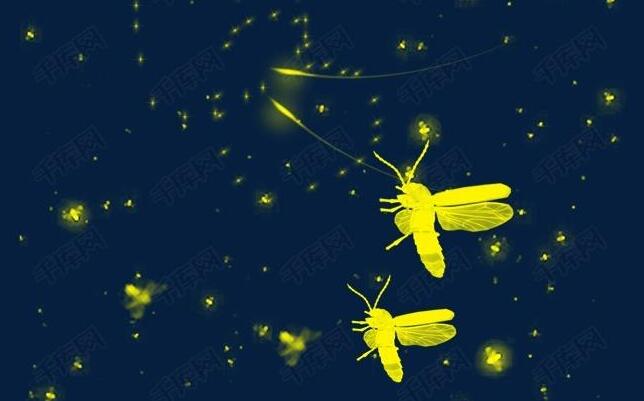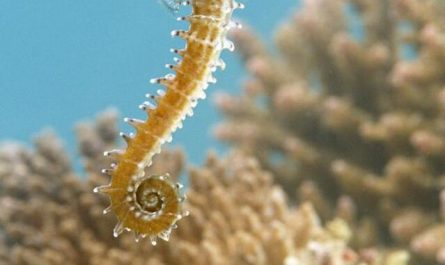How fireflies glow
At night, people can see fireflies flying in a flash. This is because a chemical substance called luciferase in the fireflies interacts with oxygen to produce light. The chemical substance called luciferase starts this reaction like a switch. When the firefly produces luciferase, the reaction starts, and the firefly emits a flash of light.
There are many kinds of fireflies, and there is a light-emitting organ that emits a green light at the end of their abdomen. They lie down in the grass during the day and fly out to move at night. The small green light at the tail decorated the night sky like an illusion. No wonder some people are scared when they see it. Firefly not only can glow as adults, but also eggs, larvae, and pupae. There is a light emitter at the end of the abdomen of the adult. The male worm has two illuminators, and the female has one. There is a light-emitting layer and a light-reflecting layer under the transparent skin of the light emitter. The light-emitting layer is yellow-white and is a protein light-emitting substance called fluorescein. When the fireflies breathe, this fluorescein synthesizes luciferase with the inhaled oxidation, so their tails begin to glow shiningly.
The organisms that can emit light include the algae in the ocean and other insects of the Firefly family. They all use luciferase to react with oxygen to emit light.
The reason why fireflies glow
First, light is for courtship. Since different types of fireflies have different patterns of light emission, there is a natural separation between the types. In most species of fireflies, males have light-emitting devices, while females have no light-emitting devices or are less developed. Glowing between male and female attracts and chases each other, looking for the object of their satisfaction.
Second, the light is to scare the enemy. In 1999, scholar Knight et al. found that lizards that accidentally eat firefly adults would die, confirming that the glow of adults not only finds a mate, but also warns other creatures; scholar Underwood et al. conducted experiments with rats in 1997 , Confirming that the larva’s luminescence has a warning effect on mice.
Firefly flash signal composition
As the carrier of information, the amount of information contained in light varies with the degree of modification of the light carrier. The information contained in the flash signal, the transmission and reception of the flash signal are all factors that affect the communication between the sexes of the firefly. The frequency, spectrum, intensity of the flash signal and the distribution of these parameters in time and space can all be regarded as signal codes. A single flash signal contains the following parameters: spectral composition, shape of the illuminator, flash signal pattern and light movement.
1. Light emitter
The shape and size of the illuminator is usually the basis for the identification of firefly species. The morphology of different firefly illuminators is very different (Figure 1) The male illuminator generally has 2 sections, and the female illuminator has 1-3 sections. The difference is large, such as water The male firefly illuminator has 2 sections, and the first section illuminator is located at the fifth abdominal section, which is in the shape of a ribbon. The second section illuminator is located at the sixth abdominal section and has a section “V” shape. The organ, band-shaped, is located in the fifth abdominal segment.
2. Spectral composition
The color of the light emitted by fireflies is determined by the structure of luciferin in their body and the way that luciferin interacts with luciferase}’}. The fluorescence spectrum is species-specific, and different species of fireflies have different spectra. Most fireflies emit yellow-green fluorescence, and the information contained in the yellow-green light at night is easily received by the same species of fireflies. In signal transmission, yellow and green light can minimize loss and improve the efficiency of signal reception, that is, the signal-to-noise ratio.
3. The movement of light
It has not been discovered that the movement of light participates in the coding of information, but in non-bioluminescent animals, whether vertebrates or invertebrates, posture is the most important and direct visual signal in behavioral contact. } Male fireflies usually fly in the air, emitting species-specific flashes for courtship, and their luminous trajectories are species-specific. Female fireflies do not identify species and sex based on a single flash pulse of male fireflies, but identify the flash signal sequence and flash trajectory emitted by male fireflies when flying.
4. Flash signal pattern
The flash mode of fireflies contains many sub-parameters, such as the specific flash mode of male fireflies, the specific flash interval of male fireflies, the response time of female fireflies, and the flash time of female fireflies. The flash signals of different fireflies are very different, and the same species of fireflies are different. Behaviors have different flash signals. Research has found that only when the male firefly flashes for 2 seconds, a simulated response flash is emitted to lure the male firefly. The female firefly of Photiuus scintillans only responds to flashes with an interval of 0.13-0.16, but does not respond to flashes with an interval of 0.20-0.34.
The biological characteristics of fireflies
1. Life history
Fireflies are completely metamorphic. They go through four stages of egg larvae and pupal adult in their lives. Aquatic fireflies can usually complete one generation in four months, and two generations in one year. On the other hand, terrestrial fireflies can only complete one generation in one year. The larvae must molt 6 times from egg hatch to pupal. The pupal duration varies from species to species, and the longest can be more than 40 days. The adult life span in the wild is generally 3-7 days, but there are some as long as 20-30 days.
2. Living habits
Habitat:
Fireflies are divided into two categories: terrestrial and aquatic according to their living environment. The former accounts for the majority. Terrestrial firefly larvae mostly live in places with high shelter, lush herbaceous vegetation and high relative humidity. Each state of aquatic firefly has a different ecological habitat; the pupal stage spends beside the water. Adults are divided into open water above the water and plants near the water by males and females, and their eggs are laid on the shore.
2. Activity time
Adult fireflies have different activity times depending on their species. There are daily and nocturnal species during the day and night, and the time of the nocturnal species is from 18:00 to 3:00 and 4: 00 in the morning. Generally speaking, most types start activities after sunset, and most of them stop at 20:00 and 21: 00 in the evening. Firefly larvae appear at night similar to adults, but they can move all night.






